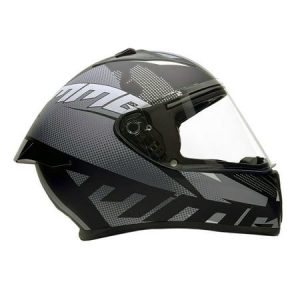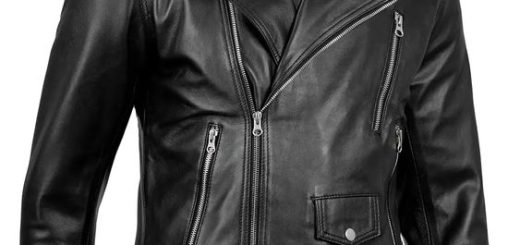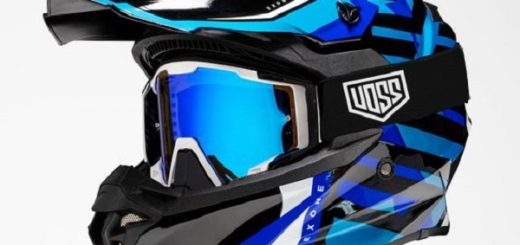Selecting the Perfect Motorcycle Helmet for a Safe Ride
Your motorcycle helmet is your most crucial safety gear. It protects your head in the unfortunate event of an accident, potentially saving your life. With a vast array of helmets available, choosing the right one can feel overwhelming. Fear not, intrepid rider! This comprehensive guide equips you with the knowledge to select a motorcycle helmet that perfectly fits your needs and riding style.
We’ll delve into essential considerations like helmet types, safety certifications, proper fit, and additional features. By the end of this guide, you’ll be empowered to confidently choose a helmet that provides optimal protection and comfort on every ride. So, buckle up (or rather, buckle your helmet!), and let’s get started!
Know Your Options – Exploring Different Motorcycle Helmet Styles
Motorcycle helmets come in various styles, each offering unique characteristics and benefits. Here’s a breakdown of the most common types:

- Full-Face Helmets: Offering the most comprehensive protection, full-face helmets enclose the entire head, face, and chin. They’re ideal for all riding styles, especially high-speed riding or long-distance touring.
- Modular Helmets: Also known as flip-up helmets, modular helmets offer the functionality of a full-face helmet with the convenience of a flip-up front section. This allows for easy on and off without removing the entire helmet.
- Open-Face Helmets (3/4 Helmets): These helmets expose the face but protect the head and ears. They are popular for short, low-speed rides due to the increased airflow and openness. However, they offer less protection compared to full-face or modular helmets.
- Dual-Sport Helmets: Designed for both on-road and off-road riding, dual-sport helmets often come with a peak (visor) to shield the rider from sun and debris. They typically offer less ventilation than dedicated street helmets.
Safety First – Understanding Helmet Safety Certifications
While style is important, safety is paramount. Look for helmets that comply with safety standards set by reputable organizations. Here are some of the most recognized certifications:

- DOT (Department of Transportation): The minimum safety standard for helmets sold in the United States.
- ECE (Economic Commission for Europe): A widely recognized European standard known for its stringent testing procedures. Many ECE-approved helmets are also DOT-approved.
- SNELL Memorial Foundation: A non-profit organization that conducts rigorous helmet testing beyond the minimum requirements. SNELL certification is considered an indicator of superior impact protection.
When choosing a helmet, prioritize certifications that meet or exceed your country’s regulations.
The Perfect Fit – Ensuring Optimal Helmet Security
A properly fitting helmet is crucial for both safety and comfort. A helmet that’s too loose can move around in a crash, reducing its effectiveness. Conversely, a helmet that’s too tight can be uncomfortable and lead to headaches. Here’s how to ensure a snug but comfortable fit:
- Measure your head: Wrap a soft measuring tape around your head just above your eyebrows. Refer to the manufacturer’s size chart to find the corresponding helmet size.
- Try before you buy: Never buy a helmet online without trying it on first. Visit a reputable motorcycle gear store and try on several helmets in your size range.
- Snug Snog Test: Put the helmet on and gently rock it back and forth. The helmet should fit snugly but comfortably, with minimal movement. The cheek pads should apply gentle pressure, and the helmet shouldn’t pinch your forehead.
- Snug Strap Test: With the helmet on, fasten the chin strap. You should be able to fit two fingers comfortably between the strap and your chin.
Gearing Up for Comfort and Functionality – Additional Helmet Features to Consider
Beyond the basics, consider these additional features that can enhance your riding experience:

- Visor: Choose a visor (clear or tinted) that offers good scratch resistance and a wide field of view. Consider anti-fog features for preventing visor fogging in humid conditions.
- Ventilation: Proper ventilation allows airflow through the helmet, keeping you cool and comfortable during hot weather rides. Look for helmets with adjustable vents on the top, chin, and back.
- Sun Visor (Internal or External): A built-in sun visor provides additional protection from the sun without needing to wear separate sunglasses.
- Communication Systems: Many helmets are now designed to integrate with communication systems, allowing you to connect with fellow riders or use a GPS navigation system.
Keeping Your Head in the Game – Maintaining Your Motorcycle Helmet
Proper helmet maintenance ensures optimal safety and functionality. Here are some key practices:

- Cleaning: Regularly clean the helmet’s exterior with a mild soap and water solution. For stubborn grime, consider a dedicated helmet cleaner. Clean the visor with a microfiber cloth to avoid scratches.
- Liner Care: The helmet liner absorbs sweat and can become smelly over time. Most helmet liners are removable and washable, following the manufacturer’s instructions.
- Visor Replacement: Scratched or damaged visors can impair your vision. Replace scratched visors promptly to maintain optimal clarity.
- Inspection: Periodically inspect your helmet for signs of damage, such as cracks, deep scratches, or loose components. If you find any damage, replace the helmet immediately.
Remember, a helmet’s lifespan is generally around five years, depending on usage and wear-and-tear. Replace your helmet after a crash or if it shows signs of significant deterioration.
Finding Your Perfect Match – Tips for Selecting a Motorcycle Helmet at a Store
When shopping for a helmet at a store, keep these tips in mind:

- Knowledgeable Staff: Seek a store with knowledgeable staff who can assist you with proper sizing and answer your questions.
- Try Different Brands: Different brands offer various head shapes and fits. Try on helmets from several brands to find the one that best suits your head shape.
- Don’t Rush: Take your time when trying on helmets. Find a helmet that feels comfortable and secure, not just the first one you try.
- Consider Your Budget: Motorcycle helmets range in price depending on features, brand, and materials. Set a realistic budget and prioritize safety certifications over fancy features.
Ride with Confidence – The Importance of a Properly Fitted Helmet
Choosing a motorcycle helmet goes beyond aesthetics. It’s a crucial safety decision. By prioritizing a properly fitted helmet that meets safety standards and offers the features you need, you’re making a conscious choice to protect yourself on the road.


